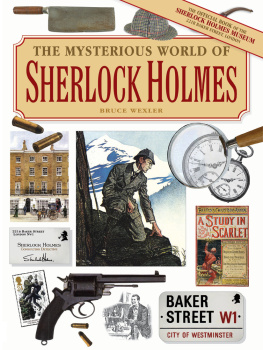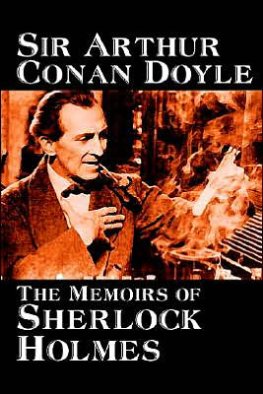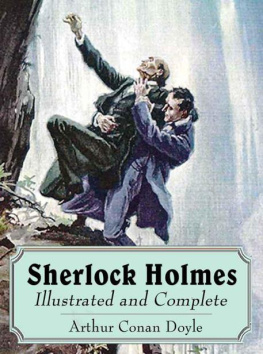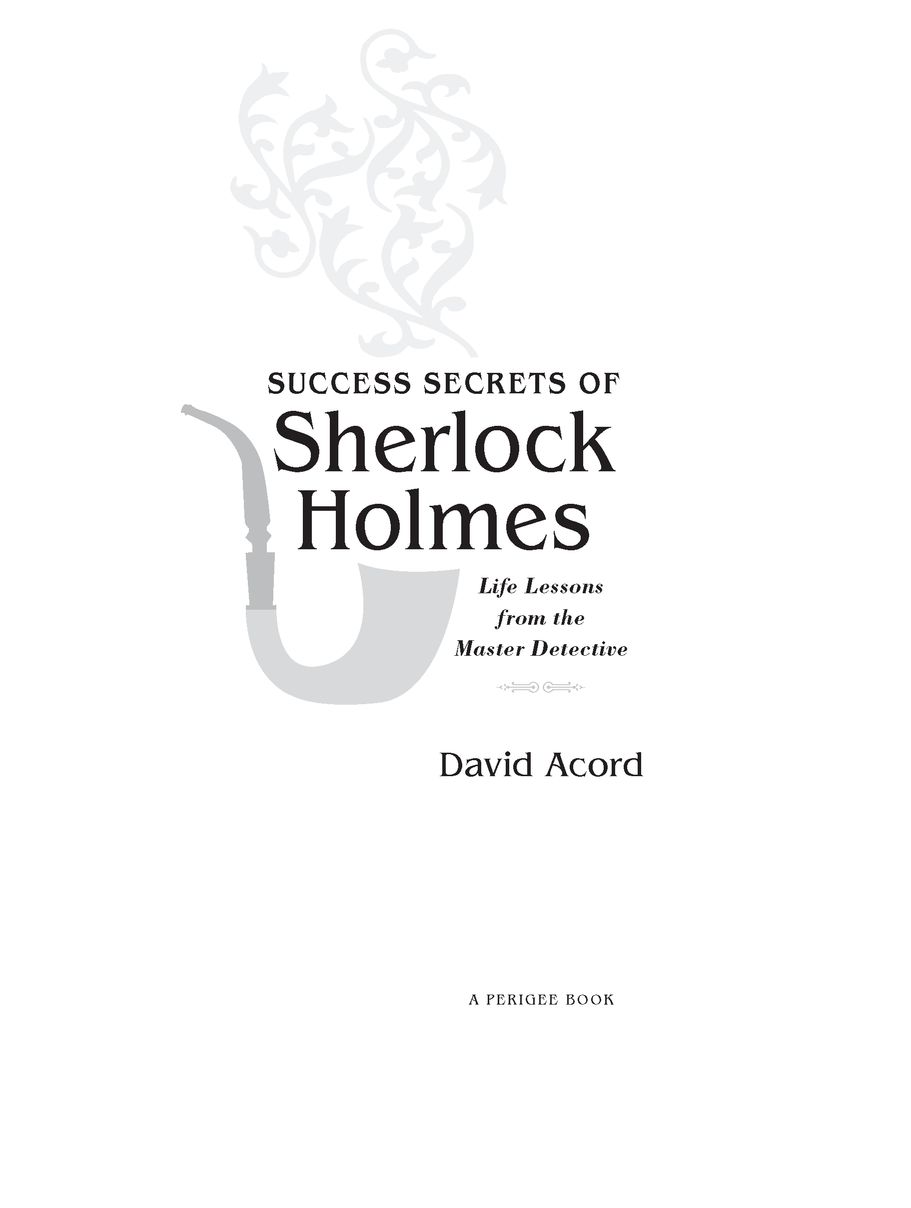Table of Contents
Acknowledgments
This project has been several years in the making, and it couldnt have happened without the help of two people in particular. I want to thank my agent, Sandy Choron, for believing in the idea from the very beginning. Her enthusiasm is infectious, and she worked tirelessly to find this book a home.
Second, I want to thank my editor, Meg Leder, for exhibiting patience above and beyond the call of duty. Authors can be notoriously flaky, and unfortunately I lived up (or down) to that reputation on more than one occasion, but for some reason Meg decided not to throw me off the nearest bridge. Her clear eye and keen sense of structure helped me create a much better book. If at any point in reading this book, you stop and say Wow, I never thought of that! chances are you have her to thank.
And of course, I would be remiss if I didnt thank the man who made this book possible in the first placeSir Arthur Conan Doyle, a genius in every sense of the word.
Introduction
Why would anyone want to model his or her life after someone who never existed?
That may seem like an odd way to start a book titled Success Secrets of Sherlock Holmes, but lets face it: Many of you reading this right now are thinking the same thing. And its all right to be skeptical; Sherlock would certainly approve. After all, at first glance the notion seems rather ridiculous. How could reading stories about a fictional nineteenth-century British detective possibly teach us anything about achieving success in the very differentnot to mention very realtwenty-first century?
The answer has a lot to do with Sherlock Holmess creator, Sir Arthur Conan Doyle (18591930), a man who was, by any objective measure, a genius. Born into a large Irish family of respected artists, not only did he invent one of the most famous literary characters in history but he also single-handedly revolutionized the mystery genre itself by introducing fiendishly complex plots that baffled even the most educated readers. In Conan Doyles hands, the typical whodunit was transformed from a stuffy, predictable piece of fluff into a highly scientific mechanism that unfolded with clockwork-like precision. He was also prolific. In addition to the fifty-six Sherlock Holmes stories and four novels, Conan Doyle wrote more than thirty-five novels and fiction collections in virtually every genre imaginable, from science fiction to the supernatural, as well as a dozen works of nonfiction, including a history of the Boer War in South Africa.
But Conan Doyle was much more than a writer. He was an energetic, idiosyncratic intellectual whose curiosity knew no bounds. A medical doctor by training, he later became one of the first eye doctors in England when the field of ophthalmology emerged in the late nineteenth century. He sought out adventure as well, spending six months on an Arctic whaling ship as a young man and nearly meeting his death in the cold waters near the North Pole. In 1894, he taught himself to ski and was part of the first ski tour across the Alps. Later in life he became obsessed with spiritualism and the unseen world and became one of the worlds earliest official ghost hunters, using scientific techniques to study paranormal phenomena (albeit with mixed results). He also tried his hand at real-life detective work, personally investigating two cases of wrongful conviction and saving two men from execution. His efforts exposed the shortcomings of Britains criminal law system and were partially responsible for the creation of the Court of Criminal Appeal in the early 1900s.
So what does all of this have to do with Sherlock Holmesand, more importantly, your success? The answer is that Conan Doyle funneled a great deal of his real-life geniusand the brilliance of others around himinto Holmes, creating a fictional protagonist greater than the sum of his parts. Likewise, the Holmes stories are much more than mere detective stories. The best Holmes tales operate on two levels simultaneously. For instance, you can choose to read A Study in Scarlet as an entertaining adventure tale to pass the time, or you can read it not as a story at all but as a study in geniusas a kind of Victorian-era self-help manual that explains in step-by-step detail how to master your chosen field of study and accomplish the seemingly impossible. Conan Doyle didnt just write superb mysteries, he encoded them with a series of hidden (and sometimes not-so-hidden) clues that can teach us the philosophy and mind-set we need to succeed beyond our wildest dreamsjust as he did.
Whether Conan Doyle deliberately added these elements to his stories or if they flowed undetected from his subconscious onto the printed page is an open question (actually, I think it was a little of both, depending on the particular story). But theres no arguing that the clues are there just waiting to be uncovered. This book is about helping you identify those clues and convincing you that Conan Doyles success principles, although more than a century old, are still vital and relevant today.
For just a moment, set aside the conventional image of Sherlock Holmes. Yes, hes witty, intelligent, self-assured, and adventurousall the qualities any great hero must possess. But think of him in a different way, as a kind of high-quality patchwork quiltor, better yet, as an avatar, the literary embodiment of the best qualities of the author and his circle of accomplished friends and acquaintances. Conan Doyle moved at the highest levels of British society, and as an educated man, he came into contact with some of the greatest minds of his era. When it came time for him to create a character to star in his mysteries, he couldnt help but borrow a few positive traits from people he knew and incorporate elements of his own personality, too. After all, if you ask a genius to write a story, chances are the final product will contain a little bit of that genius in some way. Julia Child couldnt intentionally cook a bad meal to save her life, and as talented as Michael Jordan was, he didnt have it in him to purposely play a bad game of basketball. The best cant help but be the best. This is why it makes sense to embark on a close study of Sherlock Holmes: Hes a composite fictional character built out of real material. What he did, you can do, too. Really.
If you want to understand how something works, you have to take it apart. So in
Success Secrets of Sherlock Holmes, were going to break down the Holmes canon the way a master mechanic takes apart a classic hot rod: carefully and with a great deal of respect, mindful of the incredible amount of talent and hard work it took to put it together in the first place. Along the way, well make a number of discoveries that not only will completely change the way you look at Sherlock Holmes but will also give you a brand-new set of tools to tackle the challenges and difficulties in your own life. Prepare to give up your preconceived notions about the master detectiveand successfor good. Heres a sneak peek:
Sherlock Holmes was real. Some of Holmess most amazing superpowersfor instance, his ability to size up a person and figure out their entire life history based on a few tiny detailswerent made up at all. As a medical student, Conan Doyle had a professor who used to amaze his students by performing shocking feats of analysis and deductive reasoning. A patienta total strangerwould walk into the examining room and within seconds, the professor, who had no prior knowledge of the person, began reeling off facts: where the man was from, what he did for a living, his past medical history, and so on (more on this in Secret 4). Conan Doyle never forgot these performances, and when it came time to create Holmes, he essentially created a clone of the professor. This is great news for you and me, because it proves that Holmess talents arent unrealistic and out-of-bounds, like Supermans ability to fly or Spider-Mans wall-crawling prowess. If we put in the hard work up front, we too can be just as successful as Holmes.













